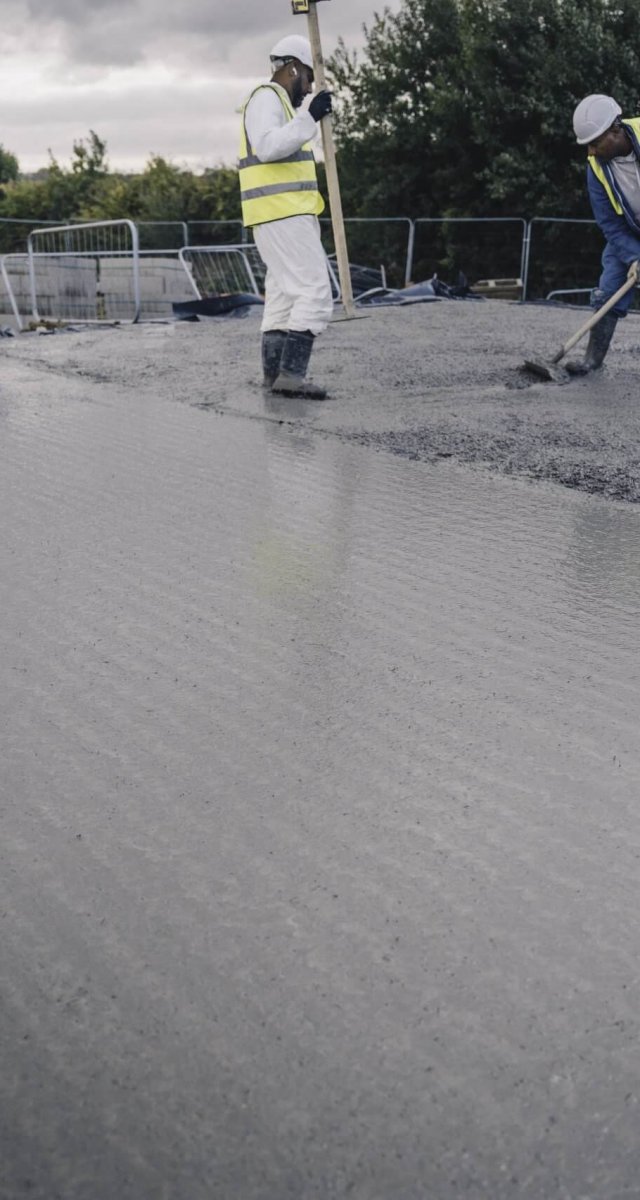What is screed and how does it differ from standard concrete?
When you’re having new carpet or tiles laid on an old and uneven floor, or you’re installing a whole new floor complete with a new concrete base, you’ll often be told that you need a layer of screed put down as part of the process.
Many people will just nod and accept the advice they are being given that this needs to happen, but it’s worth understanding the important role screed plays in domestic and commercial flooring.
So what is screed and why is it needed? In this article, we’re going to discover what it is, what it does and how it differs from regular concrete.
What is screed?
While concrete is commonly recognised by almost everyone – unsurprisingly, as it’s the most commonly used man-made material on the planet – screed is probably less well understood by those outside the industry.
Like concrete, it is a combination of cement, water and aggregates, although in the case of screed, the aggregate used is usually sharp sand as opposed to the stone or gravel that is generally used in concrete. Nevertheless, the two materials can look very similar to the untrained eye.
Screed will usually form the finishing touch to a concrete floor base because, among other things, it’s much easier to get an even and level surface with it thanks to its smoother consistency.
What is the difference between screed and standard concrete?
The main difference between screed and regular concrete is that the former not only uses much finer aggregates than standard concrete, but it also uses fewer of them.
As a result, it doesn’t have the sheer strength of concrete and isn’t suitable for general construction purposes, but it’s still tough enough to add to the durability of the floor as a whole by helping to protect the concrete base.
That’s the basic difference between the two in terms of composition, but screed and regular concrete are also used very differently in the construction process.
When would screed be used?
As mentioned earlier, one of the main uses of screed is when it is applied as a top layer to a new or uneven floor to achieve a smooth and level finish, allowing carpets, floor tiles, lino or laminate to be comfortably laid on top.
However, screed can also be used as a final layer on its own, especially in commercial environments where you need something that is smooth but can also handle greater footfall and wear and tear than other surfaces.
Screed is also commonly used in conjunction with underfloor heating systems because of its excellent insulating and heat conducting properties.
What types of screed are there?
Floor screed comes in a variety of types and thicknesses for different applications and uses. These include:
Bonded screed
Bonded screed is laid directly onto the substrate using some form of bonding agent. Typically used in heavy-duty areas and simpler to apply than unbonded screed, it should have an optimum thickness of 25-40 millimetres.
Unbonded screed
Unbonded screed, on the other hand, is deliberately kept separate from the substrate with a damp-proof membrane in places where damp may be an issue. Unbonded screed is less prone to cracking than bonded screed and has a recommended thickness of at least 50 millimetres.
Underfloor screed
Also known as floating screed, this is the type of screed most commonly poured onto underfloor heating pipes. It provides superb acoustic and thermal insulation and should be laid to a thickness of about 65 millimetres in a residential property or about 75 millimetres in a commercial setting.
Here at Stewart Brothers Concrete, we’re your local ready-mix concrete experts for a wide range of domestic and commercial applications, including all types of floor screed. We’ve been supporting customers in and around Ashford in Kent with our quality products, exceptional service and reliable delivery for over 35 years.
Get in touch with us today to find out more or to book your next concrete or floor screed delivery.

